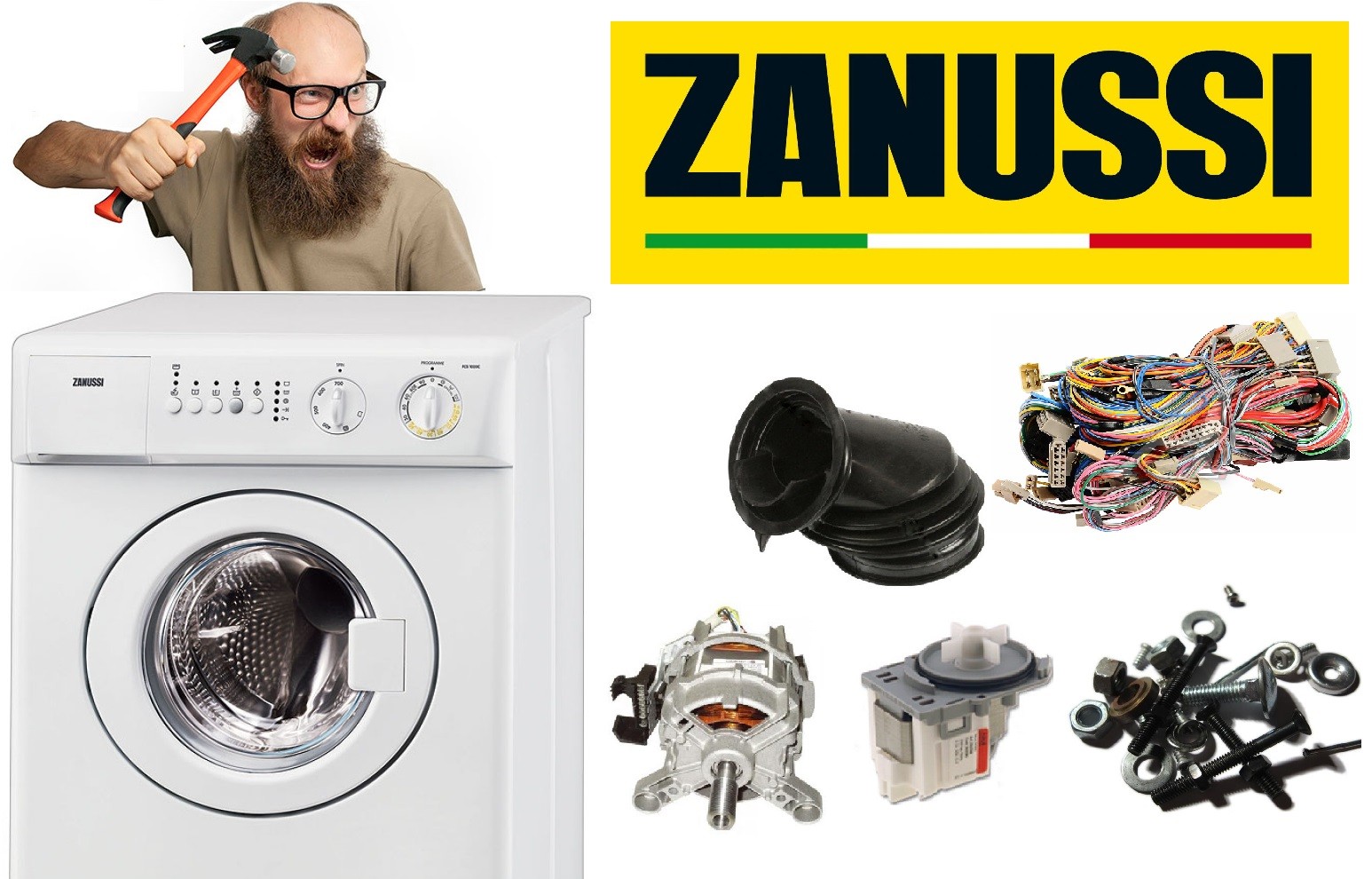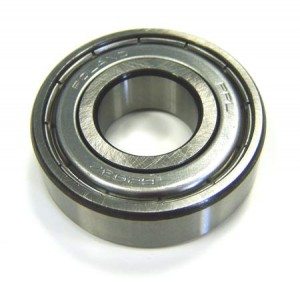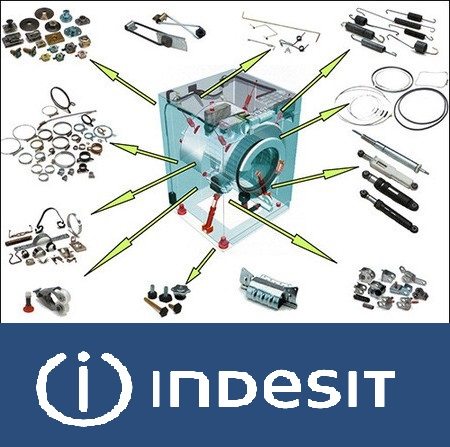How and what to lubricate the bearing in the washing machine
 Noise coming from the washing machine after some time of use may result from wear on the bearings. Perhaps there is no breakdown yet, but do not tighten the lubrication of such an important part. Timely lubrication of bearings, and mainly oil seals, will extend their service life. However, you need to know how to lubricate them and how to do it.
Noise coming from the washing machine after some time of use may result from wear on the bearings. Perhaps there is no breakdown yet, but do not tighten the lubrication of such an important part. Timely lubrication of bearings, and mainly oil seals, will extend their service life. However, you need to know how to lubricate them and how to do it.
Choose a lubricant
There are several types of grease that are used for bearings and seals. All of them have different properties, and therefore you need to choose carefully. The grease must meet the following requirements:
- must be moisture resistant. An oil seal is an o-ring that is worn on a bearing that rotates on a shaft, so that water does not penetrate into the bearing. Therefore, the grease on the gland must not be washed with water during operation.;
- to be heat resistant. When water is heated to a high temperature and the shaft is heated during the rapid rotation of the drum, the stuffing box and bearing also heat up, the grease must not lose its properties, otherwise water will get inside the bearing;
- should be suitable for rubber and not be aggressive. From poor-quality grease, the oil seals can “zadubite” or vice versa become very soft, as a result, the tightness is broken;
- should be thick. Grease does not leak during operation.
Important! Automotive lubricants, such as Litol-24, Azmol and others, it is better not to use. They are extremely inefficient and very soon you will have to change the bearings in the washing machine.
In service centers for lubrication of oil seals, they most often use:
- AMPLIFON - Italian-made waterproof grease from MERLONI.

- Anderoll, a specialty lubricant recommended by Indesit manufacturers, is sold in 100 g jars or double serving syringes.

- STABURAGS NBU 12 is another grease that is also water and heat resistant.

- LIQUI MOLY "Silicon-Fett" - German-made silicone grease, sold in tubes of 50 grams, quite expensive, but effective for lubricating oil seals.

- Huskey Lube-O-Seal PTFE Grease - waterproof grease, suitable for both bearings and oil seals.

Bearings or oil seal?
The question of how to lubricate the bearing in the washing machine, few ask, believing that this is not necessary. Most people buy a new set of bearings and seals, and during installation they lubricate only the stuffing box and sleeve. As for bearings, they are usually already greased.
If the bearings were purchased at a store that orders original spare parts at the factory, then you can safely put such bearings in the washing machine. In bearings of dubious quality, it is better to update the lubricant; in most cases, cheap low-performance lubricant is laid in them.
Therefore, the answer to the question of what needs to be lubricated, bearings or seals, this is all. The main thing is that it be one lubricant, mixing different lubricants is unacceptable. In this case, it is better to lubricate only the oil seal and the sleeve.
Remove the tank
Now let's talk about how to lubricate such important parts of the washer. We’ll warn you right away, this process is very time-consuming, since it will take almost complete disassembly of the machine to remove the tank with the drum from it. Before starting work, disconnect the machine from the water supply, drain and electricity, and then set it up so that it is accessible from all sides. Prepare screwdrivers and pliers, then proceed according to the instructions:
- remove the top case cover by unscrewing two bolts at the back;
- pull out the powder receptacle;
- disconnect the control panel by disconnecting the wires from the board;
- remove the cuff with a slotted screwdriver, for this it is tedious to bend the spring and remove the retaining clamp, and insert the edges of the cuff into the drum;

- remove the bottom panel of the washer, which rests on the latches;
- unscrew the bolts holding the front panel, usually they are located behind the powder receiver, under the lower and upper panel;
- remove the front wall of the machine;
Important! Do not forget to disconnect the wires going from the control unit to the sunroof lock device.
- disconnect from the tank all pipes, wires from the heater, pump, engine and sensors;
- remove the top panel by unscrewing it from the case, as well as unscrewing the pressure switch from the panel and removing the wires;
- unscrew the upper and lower counterweights and remove them;
- check if all pipes and wires are disconnected from the tank;
- we unscrew the shock absorbers and remove the tank from the springs, put it with the pulley up;

- remove the belt from the engine and the pulley, and then unscrew the engine.
In the course of this work, it is possible to fix the steps on the camera. Pictures will help to assemble the washing machine correctly, without confusing the connection of wires and pipes.
Finish
After pulling the tank out of the washing machine, inspect it. It can be collapsible or integral. Fixed tanks are found on Hotpoint-Ariston and others. To get to the bearings in such a tank, you will have to saw it along the joint seam. If you do this very carefully, you can connect the halves back with bolts and sealant.
Halves of a collapsible tank are connected by bolts and special latches. After the tank is disassembled, you need to knock the bearing out of the seat, a detailed instruction about this is proposed by us in the article How to remove the bearing from the drum.
After removing the bearings, inspect them for damage. Usually the washing machine is disassembled when the bearings are already out of order, it is unlikely that anyone will disassemble the equipment to check the lubrication and lubricate the part. So, if the bearing is damaged, then it is necessary to purchase a set of new bearings and an oil seal, which is reasonable to immediately replace.
If the bearing can still be operated, it must be lubricated. First, it is cleaned of dirt with WD-40 penetrating grease and wiped with a clean cloth, and then lubricated. In a collapsible bearing with a scalpel, remove the protective cover and put the grease. Lubricating a non-separable bearing is somewhat more difficult, but it is possible that the video below shows how to do this.
If the new bearing may not be lubricated, the oil seal must be lubricated. The grease is laid evenly on the inner ring, which is in direct contact with the sleeve. After installing the bearings, an oil seal is installed. All parts of the washing machine are assembled in reverse order.
As you can see, the process of lubricating bearings and seals is simple, but to get to the parts themselves, you have to do a lot of work. That is why most often with such work they turn to a professional master. But if you have the time and desire to work, do the repair yourself, good luck!
Interesting:
7 reader comments
Add a comment Cancel reply
Headings
Washing machine repair


For buyers
For users

Dishwasher


















Generally fun: in order to just lubricate the bearing, you will need to saw the tank. Why has the manufacturer not made easy access for lubrication possible?
Because in this way they will earn more money. Indeed, no authorized service center will undertake such repairs. Either do it yourself, or call a handyman who does not give a guarantee, or buy a new washing machine.
It was because of this bearing that I had to buy a new washer. That's why they do it beyond repair. Although I was offered to cut and replace the bearing. However, no one gave a guarantee. The masters themselves admitted that after such a repair the tank often starts to leak.
With this process chain, it makes no sense to lubricate the bearings until they break. The author apparently sells lubricants.
What to do if the drum spins tight even by hand?
Remove the back cover of the washing machine, remove the belt from the motor and pulley, check again without the motor. If it’s also tight - bearings. If not, the motor.
On the drift (vertical), it is not necessary to remove the tank and disassemble the entire machine, only the side walls. Unscrew hubs and replace with new ones.